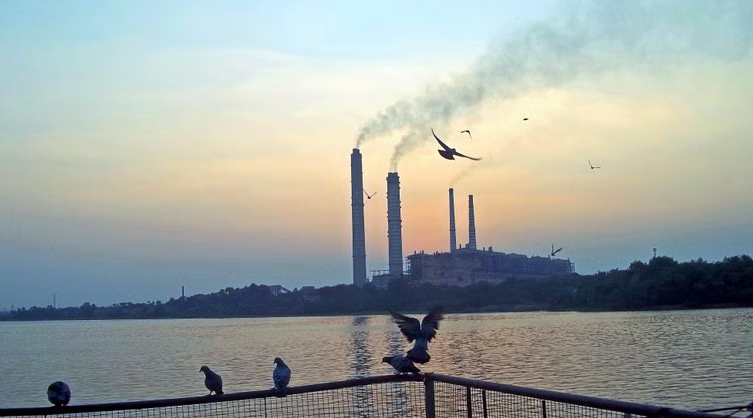Kota Barrage is one of the magnificent tourist places in Kota where people gather to enjoy a view of the white frothy water flowing in full force. Part of one of the major constructions of the Chambal Valley Project over the Chambal river.
This was built for storage of water which was stored by the three previous dams of the Gandhi Sagar Dam, Jawahar Sagar Dam and Rana Pratap Sagar Dam. Later it was channelized to the dry areas of Rajasthan and Madhya Pradesh for irrigation purposes via canals. In the present this project helps in irrigation of around 20,000 acres of land.
Location: Chambal River, Kota, Rajasthan
Entry Fee:No Entry Fee
Timing: Open 24 Hours
Best Time To Visit: October To March
The Genesis of Kota Barrage
The origins of Kota Barrage can be traced back to the mid-20th century when the demand for a reliable water management system in Rajasthan became increasingly apparent. Rajasthan, known for its arid climate and frequent droughts, required a sustainable solution to manage its water resources. The Chambal River, one of the major rivers in central India, provided an ideal opportunity for such a project.
The construction of the Kota Barrage began in 1952 as part of the larger Chambal Valley Project, which aimed to utilize the Chambal River’s water for irrigation, hydroelectric power generation, and flood control. The project was a collaborative effort between the governments of Rajasthan and Madhya Pradesh, with support from the central government. After years of meticulous planning and construction, the Kota Barrage was completed in 1960, and it has since become an integral part of Rajasthan’s water infrastructure.
Engineering Marvel: Design and Structure
The Kota Barrage is a gravity dam, designed to hold and regulate the flow of water from the Chambal River. Spanning over 1,000 meters in length and standing at a height of about 27.5 meters, the barrage is a massive structure that commands attention. It is equipped with 19 spillway gates, each capable of discharging up to 18,000 cubic meters of water per second. These gates play a crucial role in managing the river’s flow, especially during the monsoon season when the river is prone to flooding.
The design of the Kota Barrage is a testament to the engineering prowess of its time. The barrage was constructed using reinforced concrete, a material known for its strength and durability. The foundation of the barrage is anchored deep into the riverbed, ensuring stability even under the immense pressure of the water it holds back. The spillway gates are operated using a combination of hydraulic and mechanical systems, allowing for precise control of the water flow.
One of the most impressive aspects of the Kota Barrage is its ability to withstand the forces of nature. The Chambal River, known for its unpredictable flow and heavy monsoons, presents significant challenges in terms of water management. The barrage’s design takes these factors into account, with features like energy dissipation structures that reduce the impact of high-velocity water flow, minimizing erosion and structural damage.
The Role of Kota Barrage in Irrigation and Agriculture
Kota Barrage plays a pivotal role in supporting the agricultural economy of Rajasthan. The barrage’s primary function is to divert water from the Chambal River into a network of canals that irrigate vast tracts of farmland in the region. These canals, collectively known as the Chambal Irrigation System, extend over 2,200 kilometers, covering the districts of Kota, Bundi, Baran, and Jhalawar.
The water from the Kota Barrage irrigates over 4 lakh hectares of farmland, making it one of the most significant irrigation projects in the state. The barrage’s efficient water management has transformed the region’s agricultural landscape, enabling farmers to cultivate a variety of crops, including wheat, rice, mustard, and sugarcane. The assured water supply has not only increased agricultural productivity but has also contributed to the overall socio-economic development of the region.
In addition to irrigation, the Kota Barrage also helps in recharging the groundwater levels in the surrounding areas. This is particularly important in a state like Rajasthan, where water scarcity is a perennial issue. The recharge of groundwater ensures that there is a sustainable supply of water for drinking and other domestic purposes, even during dry seasons.
Power Generation: Kota Barrage and Hydroelectricity
Another significant contribution of the Kota Barrage is its role in hydroelectric power generation. The barrage is part of the Chambal Hydroelectric Project, which includes a series of dams and powerhouses along the Chambal River. The water released from the barrage is directed towards the Kota Hydroelectric Power Station, located downstream, where it drives turbines to generate electricity.
The Kota Hydroelectric Power Station has an installed capacity of 172 MW, and it plays a vital role in meeting the energy needs of Rajasthan. The electricity generated here is supplied to the state grid, providing power to both urban and rural areas. This has been instrumental in driving industrial growth and improving the quality of life in the region.
The hydroelectric power generated by the Kota Barrage is also a clean and renewable source of energy. Unlike thermal power plants that rely on fossil fuels, hydroelectric power does not produce greenhouse gases or other pollutants, making it an environmentally friendly option. The Kota Barrage thus contributes to Rajasthan’s efforts to transition towards more sustainable energy sources.
